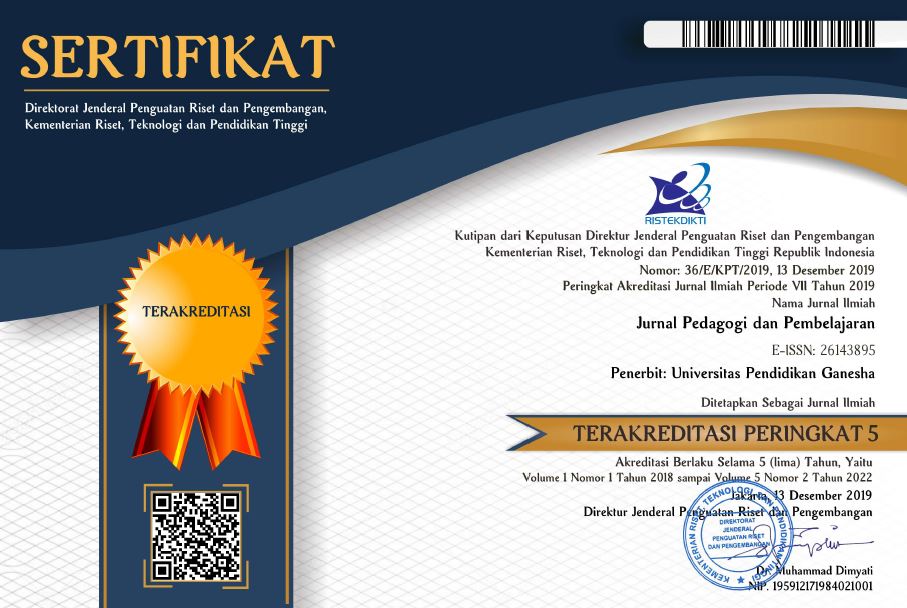Problem Based Learning Video on Force Material for Fourth Grade of Elementary School
DOI:
https://doi.org/10.23887/jp2.v7i2.82716Keywords:
Learning Videos, Problem Based Learning, IPASAbstract
Facts in the field show that teachers do not use enough problem-based learning media when teaching. This has an impact on students' low problem-solving abilities. This study aims to analyze the effectiveness of problem-based learning video media for the subject of science, the material of the forces around us, grade IV elementary school. The type of research conducted is development research using the ADDIE model (Analyze, Design, Development, Implementation, Evaluation). The subjects of this study were 33 grade IV students. The method and instrument for data collection used questionnaires and tests. Data were analyzed using quantitative descriptive analysis techniques and inferential statistics. The results of trials by experts and practitioners showed that the learning media were included in the good category and were declared very suitable for use in the learning process. The results of the media effectiveness test on student learning outcomes stated that H0 was rejected and H1 was accepted. Thus, it can be concluded that media innovation in the form of problem-based learning videos for the subject of science, the material of the forces around us, grade IV elementary school has proven to be effective in its application. This study has implications for increasing teacher participation in using problem-based learning video media to develop students' ability to solve problems.
Published
How to Cite
Issue
Section
License
Copyright (c) 2024 Ni Putu Putri Prananda Maharani, Ni Wayan Suniasih, I Wayan Sujana

This work is licensed under a Creative Commons Attribution-ShareAlike 4.0 International License.
Authors who publish with Jurnal Pedagogi dan Pembelajaran agree to the following terms:- Authors retain copyright and grant the journal the right of first publication with the work simultaneously licensed under a Creative Commons Attribution License (CC BY-SA 4.0) that allows others to share the work with an acknowledgment of the work's authorship and initial publication in this journal
- Authors are able to enter into separate, additional contractual arrangements for the non-exclusive distribution of the journal's published version of the work (e.g., post it to an institutional repository or publish it in a book), with an acknowledgment of its initial publication in this journal.
- Authors are permitted and encouraged to post their work online (e.g., in institutional repositories or on their website) prior to and during the submission process, as it can lead to productive exchanges, as well as earlier and greater citation of published work. (See The Effect of Open Access)









